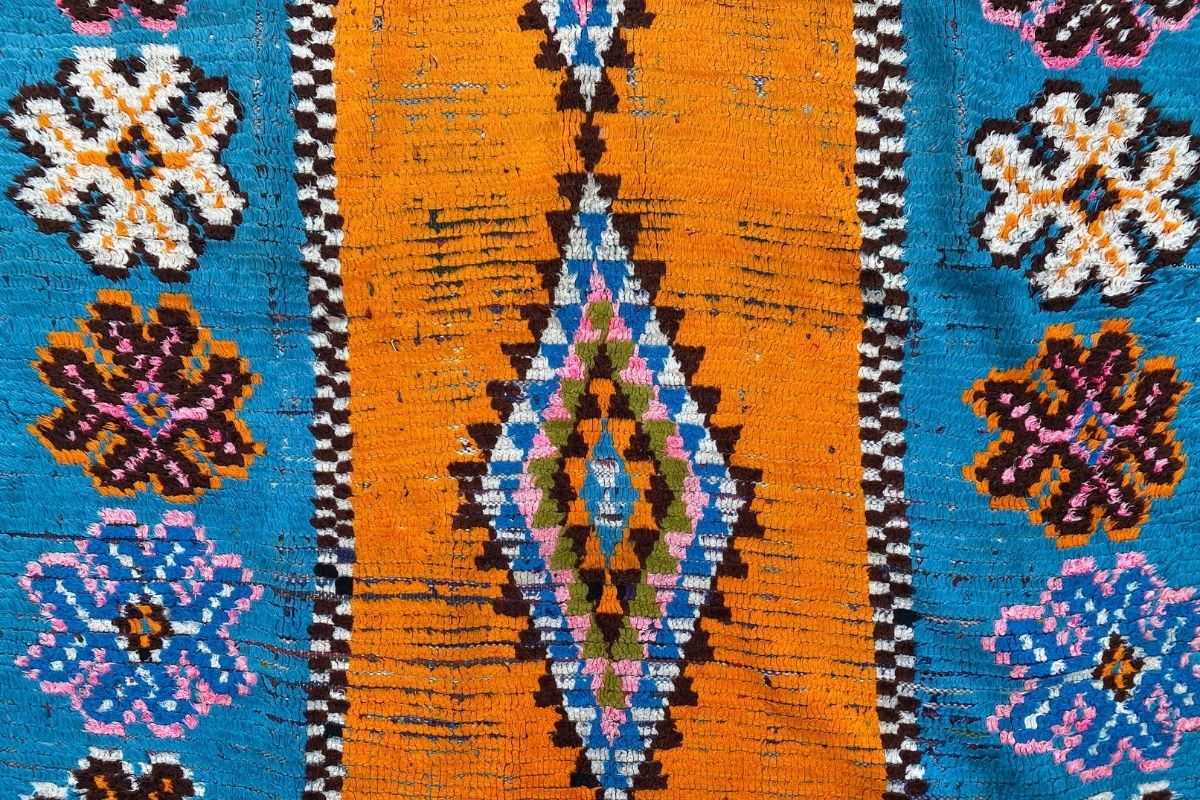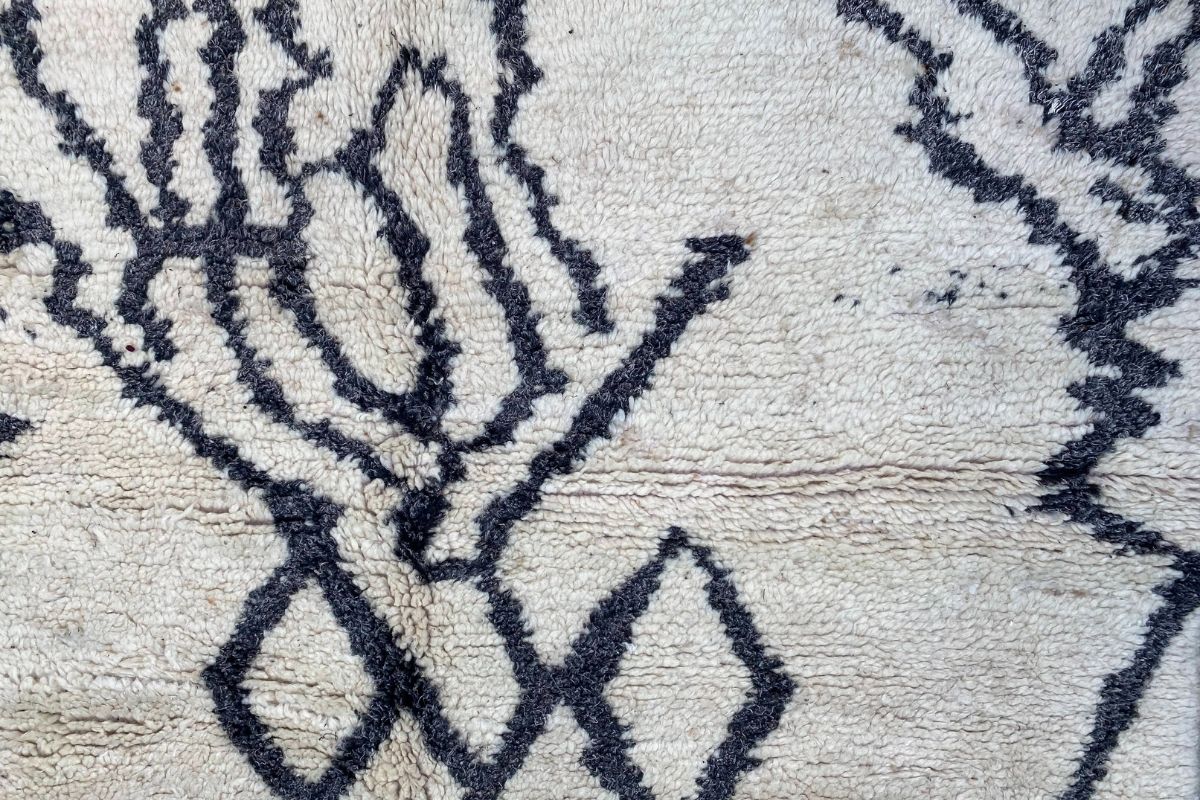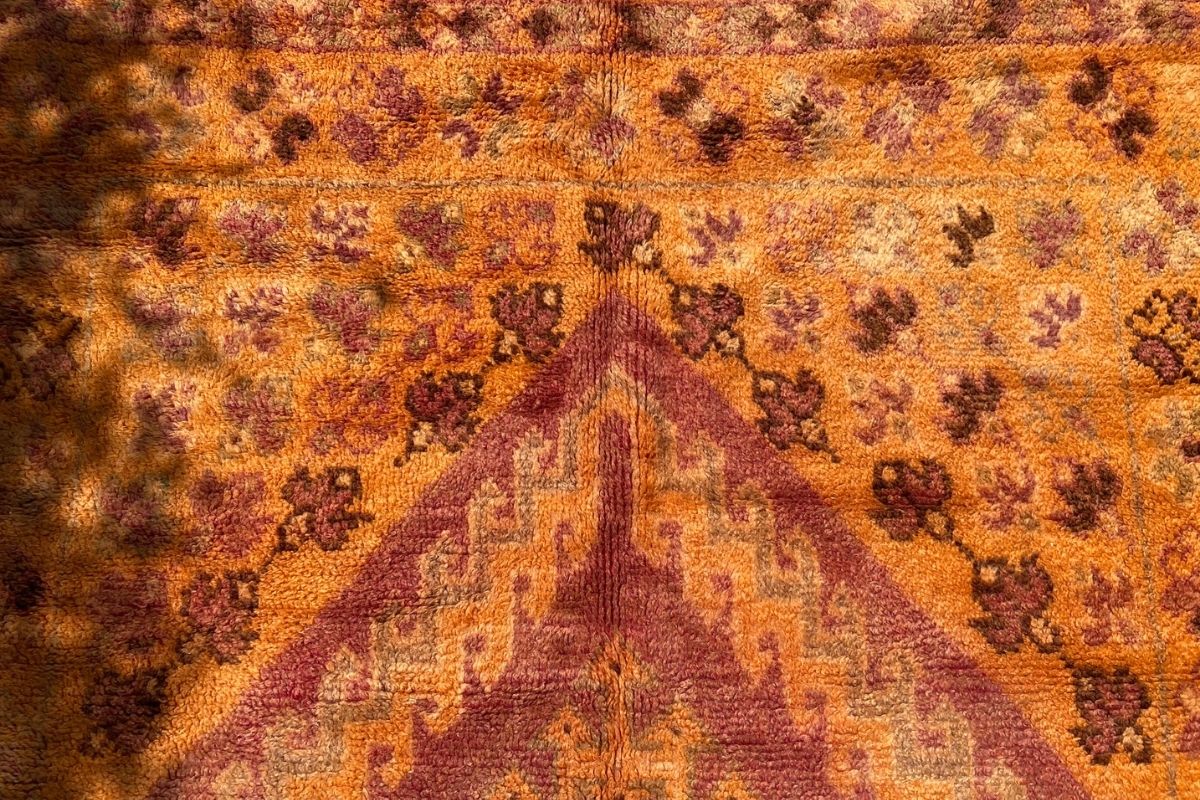On the Road with Smithsonian Journeys
Mar 13, 2021
Last fall the Smithsonian launched their virtual lecture series. They asked me to give one of the talks that I normally give on the Splendors of Morocco tour. I was more than happy to oblige. The timing was perfect. I was supposed to be in Morocco last fall, leading both a Kantara Tours and a Smithsonian Journeys trip as their resident expert.
Needless to say, there was no travel last year. With the whole world stuck in a pandemic lockdown, this lecture offered me the chance to live vicariously through my past travels as I gathered photos and videos and prepared for the talk. In reliving the stories I felt just a tiny bit more connected to the rug weaving communities in Morocco where I work.
Now, in honor of Women's History Month, the Smithsonian is re-airing some of their past lectures and they've chosen to feature my talk about the craft of weaving in Morocco. Tune in anytime from Tuesday March 16th until March 19th to hear my lecture!

Women's History Month with Smithsonian Journeys
Tune in for a re-airing of my Smithsonian Journeys talk on the craft of rug weaving in Morocco.
March 16th, 12pm EDT - March 19th, 12pm EDT
My Smithsonian Journey
I first traveled to Morocco with Smithsonian Journeys in 2019. That year was a busy travel year. I had just launched Kantara Tours and was preparing for the maiden voyage of our Signature Tour. Earlier that year, I had led a student trip in conjunction with Global Works Travel. There was also a custom tour I led for a couple of clients. And then Smithsonian Journeys reached out. They were looking for a Morocco expert and was I free that fall to join one of their trips?
The answer was unequivocally, yes! I loved the Smithsonian mission and I was excited to start working more with adult travel.
Up until that point, I had cut my teeth, leading student trips all over the world. The first one was a four-week trip for high schoolers in Ecuador in 2009. Then there was a trip to Morocco for a high school French class in 2011. There was another trip with 50 ten-year-olds in New Orleans-- which is a story for another time! For years, I led trips to a small coffee-farming community in the mountains of Costa Rica with Global Works Travel. On these trips, I worked closely with community leaders to set up long-lasting service projects for engaging American high school and college students.
The students would come away from this experience completely transformed. They'd spend almost a week in the homestay, eating the local Gallo Pinto, working side-by-side with community members on service projects, jumping into impromptu futból matches, hiking through the coffee fields, and learning about the local coffee industry. They learned the meaning of participatory development and applied it in realtime to projects that consulted with and benefitted the local community. Through this process, they learned about commodity markets, program management, and marketing and distribution.
Coffee farming in Costa Rica may be a world away from handmade Moroccan rugs, but over the years I have found many parallels. The most important thing is, leading these Global Works Travel trips solidified my commitment to running my business with the utmost level of integrity and communication with the local communities.

And so after years of leading student travel, in 2019, I started working with adult travelers. Before the world went into lockdown, I was able to join two Smithsonian Tours as their Morocco expert. There's also a Moroccan Tour Director on these trips and they are arguably the Expert of all Experts.
Both of the Tour Directors that I led with had a depth of knowledge that was unsurpassed. They had a nuanced understanding of Morocco's religion, culture, and economy and an ability to synthesize centuries of history into musings, anecdotes, and timely talks. I can't speak highly enough about the Tour Directors!
One of my favorite parts of these Smithsonian Journeys trips are the conversations that we engage in over meals. I've always loved traveling with others because I appreciate the perspective that I get when I see the world through other people's eyes. Whether you're leading a group of young folks or a Smithsonian Journeys trip, this is always the case. Other's curiosity has always inspired me. And these trips are chock full of thoughtful observances, lively debate, and open-ended conversations.
In addition to the interpersonal element, there are so many other reasons I love traveling with the Smithsonian in Morocco. I've included a few photos from my past tours along with some commentary about the elements of these trips that I love the most!



The Moroccan design and decor (obviously!)
My work with Kantara was born out of a deep love for for the craftsmanship of women weavers throughout Morocco. But it's not just the weavers that are masters of their craft. Throughout the country, we find artisans who work with a variety of materials to produce beautiful and functional objects. Whether we're visiting a palace that dates back to the 16th century or touring the Hassan II mosque in Casablanca which was built in 1993, it's clear that craft and artistry permeates every sector and every region in Morocco.
As a result, Moroccan architecture and design are in a league of their own. Traveling through the country is a nonstop visual feast for the eyes. Here, you find that a door isn't just a door, a school isn't just a school; a mausoleum isn't just a mausoleum. They are vehicles for the display of a level of craftsmanship that is unfathomable.
These places are impressive on their own, and then we learn the history and meaning behind certain design elements. For instance, in every neighborhood in the old medina you will always find the same five types of establishments: a mosque, a hammam, a shared fountain in the street, a communal bread oven, and a school. The shared fountains are a perfect example of the confluence of function and aesthetics. They are beautifully tiled creations, essentially medieval public art pieces, that also delivered water to residents nearby. These fountains are no longer used for water delivery, but they can still be found throughout the medinas of Fes, Marrakech, and Rabat.
The most breath-taking places we visit were built centuries ago. They feature a level of tilework that is simply astounding. After we visit the pottery makers in Fes and see how the tiles are made by hand, painstakingly, one at a time, we have a whole new appreciation for all of the tilework that we see around us.

Our palatial accommodations
What can I say? We stay in palaces and kasbahs. We wake up to the birds chirping and the sun rising over the most incredible views. After a long day touring throughout Morocco, the best part is coming home to these quiet oasis hotels. Here, we can revel in the design of the space, book a visit to the hammam, relax by the pool, and dine on delectable spread of Moroccan food.
In Rabat, we stay at the La Tour Hassan Palace. On my first Smithsonian tour, I started talking to the hotel manager about the history of the hotel. It turns out it was the city residence of Thami el-Glaoui, built in 1912, at the height of Glaoui power in Morocco.
I first heard of Glaoui in the context of a distinct weaving style that you find in the High Atlas Mountains, near Ouarzazate. I've always loved these rugs. It might be the warm-toned desert colors that remind me of adventures in the deserts of Morocco and California. But they're also texturally unique. They feature three distinct weaving styles in one piece: there are flatweave sections, usually with embroidery on top; thicker, hand-knotted pile sections; and thin little bands featuring the Zanafi style twining.
The black-and-white Zanafi sections of the rug tuft out on either side, creating convenient handles to hold on to. In this way, the Glaoui rugs also served a functional purpose, as they were meant to double as a means to carry belongings from one location to the next.
Rugs aside, the history of the Glaoui people is even more fascinating.
At the turn of the 20th century, the Glaoui empire spread across thousands of kilometers. The tribe had gained wealth and notoriety from uniting the southern Amazigh tribes and maintaining the largest stake in the trans-Saharan caravan routes. In this context, the rugs make sense. With an empire that spread throughout Southern Morocco, the Glaoui tribes were constantly on the move.
The Glaoui leaders, specifically Thami el Glaoui and his older brother Madani el-Glaoui, maintained residences in dozens of cities throughout Morocco. Some of them were, simply put, palatial estates, designed to entertain notable guests like Winston Churchill, Maurice Ravel, and Charlie Chaplin. Others were strategic outposts, meant to amplify Glaoui positions of political and economic influence in the region.

The hotel we stay at in Rabat represents the latter. After the hotel manager connected the dots for me between the La Tour Hassan palace and the Glaouis, he brought me down to a service hallway and showed me this photo of the hotel when it was first built to serve as Thami El-Glaoui's business headquarters in the heart of Morocco's administrative capitol.
So that's where the Smithsonian Tours begin. And every subsequent hotel that we stay in is a treasure in its own unique way!



The Hospitality of our Moroccan hosts
Last, but certainly not least, we can't speak of a trip to Morocco without talking about the generosity of our hosts! In Morocco, if you're a guest, it is the utmost honor. There's a word for 'guest' in Arabic, difa, and the culture of hospitality is centered around making guests feel at home. In this way, it is treated as a sacred tenant. In every city we visit, we're invited into people's homes where we are showered with delicious home-cooked meals and a comfortable place to kick up our weary feet for a bit.
Whether we're breaking bread together, participating in traditional music and dance performances, or learning about Moroccan tea ceremonies, these experiences are so much more memorable because of the graciousness of our hosts.
On my last Smithsonian trip, we had just finished the tea ceremony and the matriarch of the family proudly showed off her henna-ed hands. While henna is a common thing to see on women's hands in Morocco, this level of detail and intricacy hinted at the fact that she was preparing for a large celebration.
And she was! It turns out her granddaughter was getting married that evening. And then, before we knew it, we were all invited to the wedding. They weren't just being polite about it. They really wanted us to come. In Morocco, there's an unspoken covenant: what's mine is yours, I'm happy to share, and it would be an honor to have you as a guest.
In this moment, and so many others, I get a strong sense of our shared humanity. It's such a treat to be welcomed into the homes and lives of our new Moroccan friends, where we connect over universal values of food, music, dance, and family.

Recent Rug Journal articles
Top 5 Rugs for Kids
Moroccan rugs make great additions to kids bedrooms with their bright colors and playful patterns. Check out our list of the top 5 Kantara rugs for kids.
View DetailsTop 5 Rugs of the Summer 2020 collection
It was hard to narrow down, but here is the list we put together of the top 5 rugs of the summer 2020 Kantara collection.
View DetailsNew Summer 2020 collection of Moroccan rugs
The new shipment of Moroccan rugs will be here by the end of the month! In the meantime you can browse all the new rugs here and see which ones are some of our favorites from this new batch!
View Details







